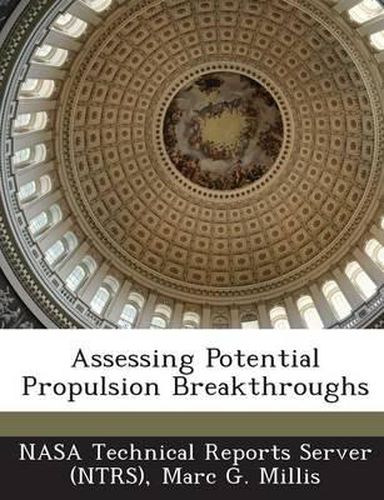Readings Newsletter
Become a Readings Member to make your shopping experience even easier.
Sign in or sign up for free!
You’re not far away from qualifying for FREE standard shipping within Australia
You’ve qualified for FREE standard shipping within Australia
The cart is loading…






The term, propulsion breakthrough, refers to concepts like propellantless space drives and faster-than-light travel, the kind of breakthroughs that would make interstellar exploration practical. Although no such breakthroughs appear imminent, a variety of investigations into these goals have begun. From 1996 to 2002, NASA supported the Breakthrough Propulsion Physics Project to examine physics in the context of breakthrough spaceflight. Three facets of these assessments are now reported: (1) predicting benefits, (2) selecting research, and (3) recent technical progress. Predicting benefits is challenging since the breakthroughs are still only notional concepts, but kinetic energy can serve as a basis for comparison. In terms of kinetic energy, a hypothetical space drive could require many orders of magnitude less energy than a rocket for journeys to our nearest neighboring star. Assessing research options is challenging when the goals are beyond known physics and when the implications of success are profound. To mitigate the challenges, a selection process is described where: (a) research tasks are constrained to only address the immediate unknowns, curious effects or critical issues, (b) reliability of assertions is more important than their implications, and © reviewers judge credibility rather than feasibility. The recent findings of a number of tasks, some selected using this process, are discussed. Of the 14 tasks included, six reached null conclusions, four remain unresolved, and four have opportunities for sequels. A dominant theme with the sequels is research about the properties of space, inertial frames, and the quantum vacuum.
$9.00 standard shipping within Australia
FREE standard shipping within Australia for orders over $100.00
Express & International shipping calculated at checkout
The term, propulsion breakthrough, refers to concepts like propellantless space drives and faster-than-light travel, the kind of breakthroughs that would make interstellar exploration practical. Although no such breakthroughs appear imminent, a variety of investigations into these goals have begun. From 1996 to 2002, NASA supported the Breakthrough Propulsion Physics Project to examine physics in the context of breakthrough spaceflight. Three facets of these assessments are now reported: (1) predicting benefits, (2) selecting research, and (3) recent technical progress. Predicting benefits is challenging since the breakthroughs are still only notional concepts, but kinetic energy can serve as a basis for comparison. In terms of kinetic energy, a hypothetical space drive could require many orders of magnitude less energy than a rocket for journeys to our nearest neighboring star. Assessing research options is challenging when the goals are beyond known physics and when the implications of success are profound. To mitigate the challenges, a selection process is described where: (a) research tasks are constrained to only address the immediate unknowns, curious effects or critical issues, (b) reliability of assertions is more important than their implications, and © reviewers judge credibility rather than feasibility. The recent findings of a number of tasks, some selected using this process, are discussed. Of the 14 tasks included, six reached null conclusions, four remain unresolved, and four have opportunities for sequels. A dominant theme with the sequels is research about the properties of space, inertial frames, and the quantum vacuum.